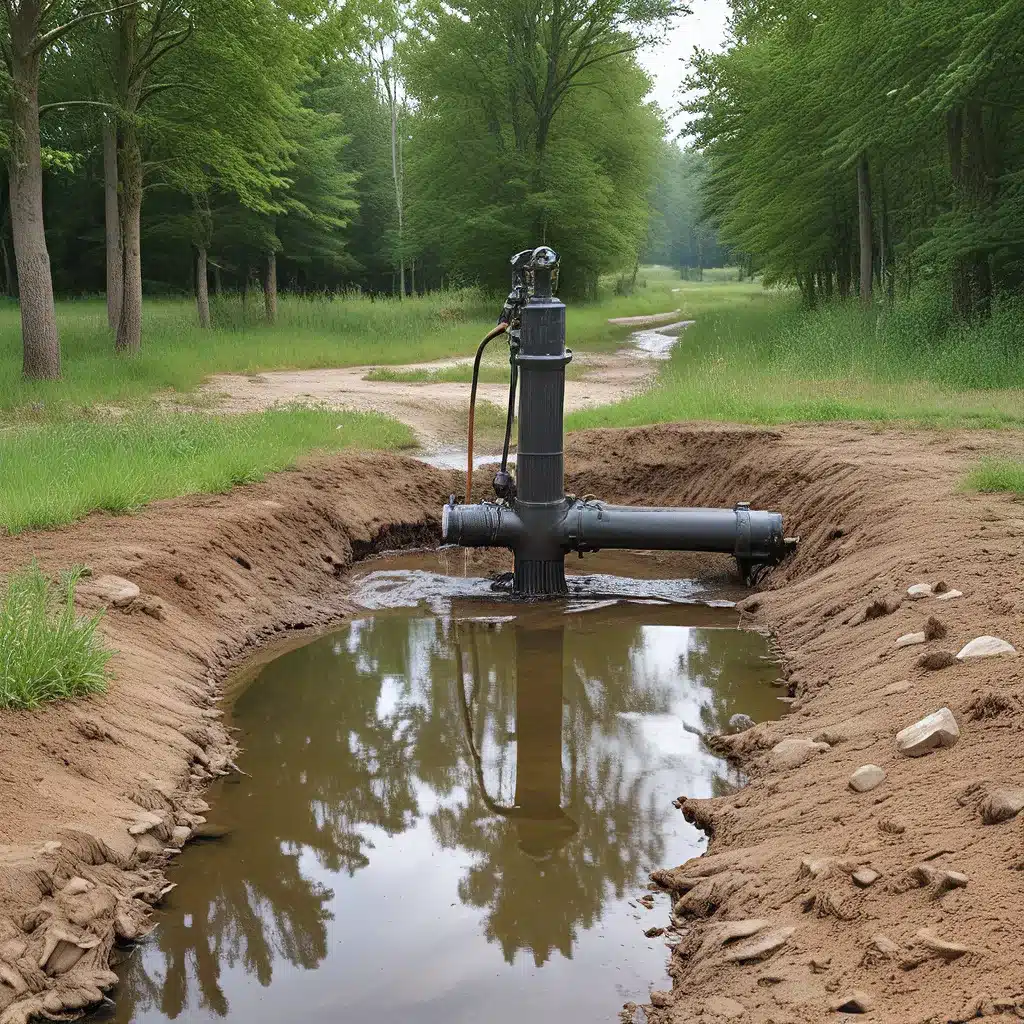
The Permian Basin’s Hidden Troubles
The Permian Basin, known far and wide as the heart of Texas oil country, is a landscape that hides more secrets than one might imagine. Beneath the dusty plains and weathered pump jacks, a complex and often unseen battle rages – a battle for the very lifeblood of the region, the groundwater.
Ashley Watt, a tough-as-nails West Texas rancher, knows this struggle all too well. Her family’s 29,000-acre Antina Ranch, nestled just southeast of the town of Monahans, has been a battleground against the oil and gas industry’s impact on the land and water. And as she’s discovered, the problems run deeper than anyone could have imagined.
It all began with a seemingly innocuous leak from an abandoned well on Watt’s property. But as she and her team of determined investigators would soon uncover, this was just the tip of the iceberg – a symptom of a much larger and more complex issue plaguing the Permian Basin’s underground aquifers.
Uncovering the Estes 24 Mystery
In the summer of 2021, an oil-lease operator named Ash Stoker stumbled upon a startling sight on Watt’s ranch – a pool of salty water bubbling up from an old, supposedly plugged well known as the Estes 24. Watt, who had long been concerned about the impacts of the oil industry on her family’s land, immediately sprang into action.
She assembled a team of experts, including a former Schlumberger logging engineer named Bill Burch and a well-fixing specialist named Joshua Pollard, to get to the bottom of the mystery. What they found was deeply troubling.
Chevron, the oil giant legally responsible for the Estes 24, quickly rushed in a contingent of contractors and lawyers to try and contain the leak. But as Burch and Watt’s team discovered, the problems went far beyond a single well.
The Texas Open Meetings Act requires government agencies like the Railroad Commission to conduct their business transparently, but Watt soon found that transparency was sorely lacking when it came to Chevron’s activities on her land.
The Extent of the Problem
As Pollard pored over decades of oil and gas records, a disturbing pattern emerged. It seemed that Chevron and its predecessor, Gulf Oil, had been systematically injecting massive amounts of salt water back into the Permian’s subsurface for decades – far exceeding the permitted limits.
This practice of water injection, while common in the industry, had apparently created a high-pressure zone of potentially toxic and radioactive brine deep underground. And this zone was now finding its way to the surface through aging, poorly plugged wells like the Estes 24.
The implications were staggering. If this pressurized brine was making its way into the Permian’s precious groundwater aquifers, the consequences could be devastating – not just for Watt’s ranch, but for the entire region.
Uncovering a Larger Threat
Watt’s investigation soon revealed an even more troubling discovery. Just months before the Estes 24 began leaking, another well on her property, the Estes 20, had experienced a similar incident. Chevron had downplayed the severity of that leak, claiming it was a minor issue that didn’t require reporting to the state.
But Watt’s team uncovered evidence that the Estes 20 had in fact been spewing thousands of barrels of salt water for days before Chevron finally got it under control. And the damage wasn’t limited to the surface – the salty water had killed off vegetation across a large swath of the ranch.
Even more alarming, Watt found that Chevron had quietly gone back and re-plugged another well, the Estes 27, just months before the Estes 24 began leaking. This suggested that the company was aware of a larger issue and was trying to contain the problem, rather than addressing its root causes.
The Fate of the Permian
As Watt and her team continued to unravel the web of secrets and deception, the picture that emerged was deeply troubling. It seemed that the Permian Basin, long hailed as the engine of the Texas oil and gas industry, was sitting atop a ticking time bomb of potentially catastrophic groundwater contamination.
The story of Ashley Watt’s battle with Chevron is just one example of the larger struggle playing out across the Permian. As oil companies have amassed vast swaths of land, the state’s regulatory agencies have often turned a blind eye to the impacts on the region’s precious groundwater resources.
The implications are dire. If the Permian’s aquifers become irreparably contaminated, it could spell the end of the region’s ability to sustain agriculture, livestock, and even human habitation. The very lifeblood of West Texas could be lost, all in the pursuit of extracting the last drops of oil.
The Path Forward
As Watt continues her fight against Chevron and the Texas Railroad Commission, she knows that the stakes couldn’t be higher. She is determined to force the industry and the state to take responsibility for the damage they’ve done, and to implement a comprehensive plan for groundwater remediation.
“If I want money, I would have shut up, lawyered up, and let them do their thing,” Watt told me. “But I don’t want money. I want them to clean up the mess they’ve made.”
Watt’s fight is not just for her own ranch, but for the future of the entire Permian Basin. And as more and more stories like hers come to light, it’s clear that the time for action is now.
At Inland Waters, Inc., we are committed to working with landowners, municipalities, and industry leaders to develop innovative solutions for groundwater remediation. The challenges facing the Permian Basin may be complex, but with the right approach and the right partners, we believe that the secrets of this vital resource can be unlocked and preserved for generations to come.


